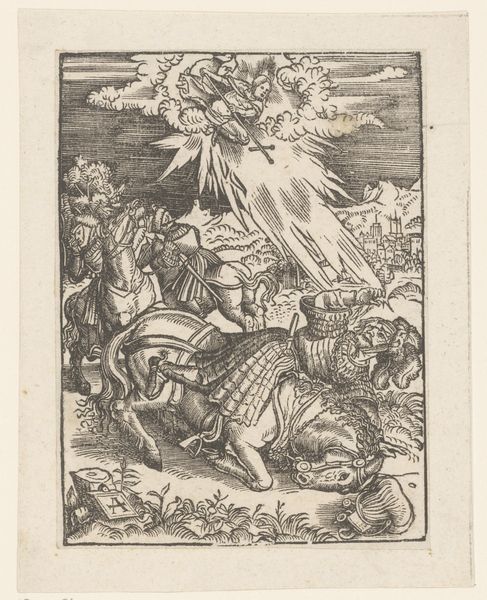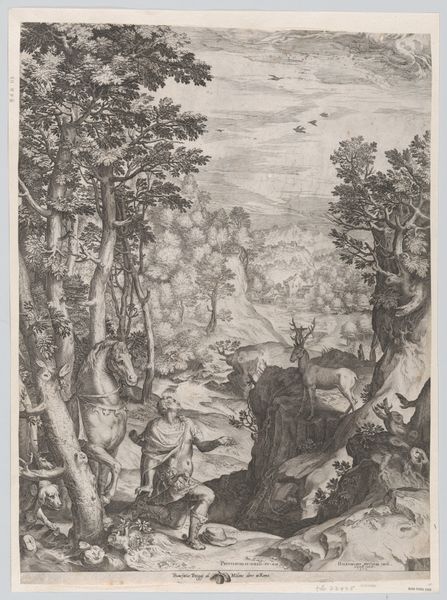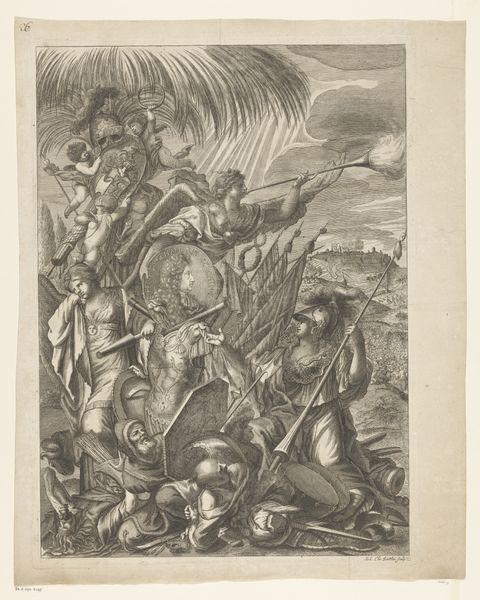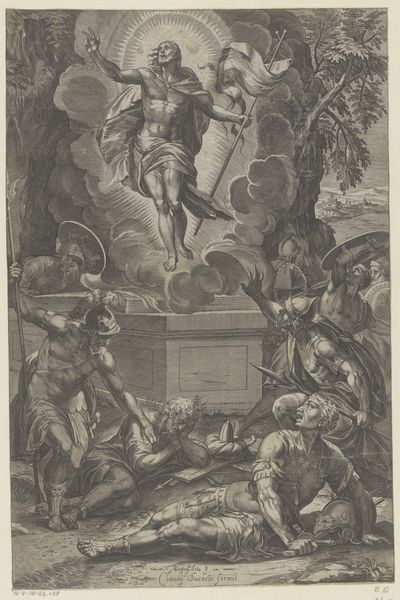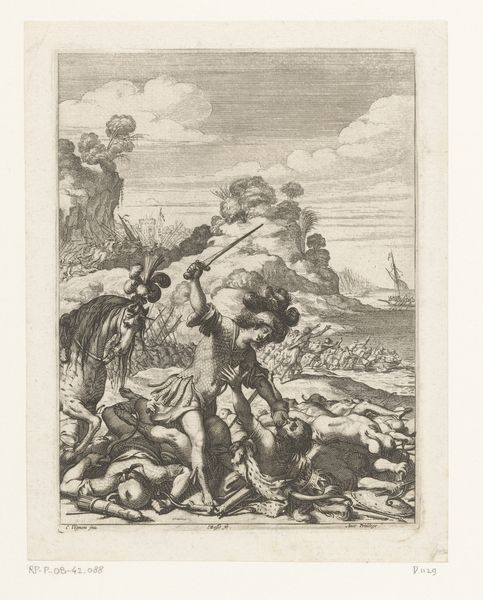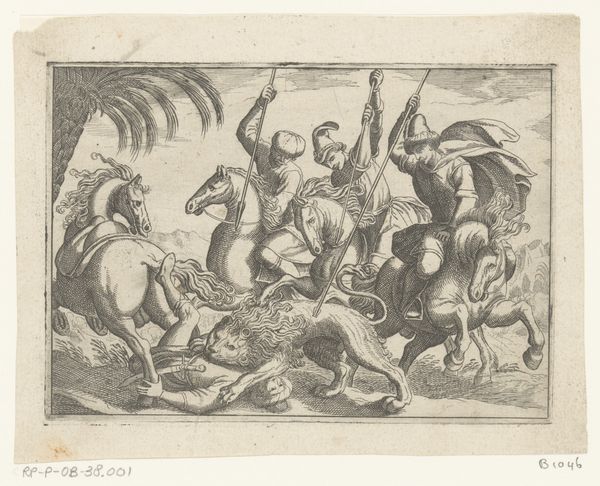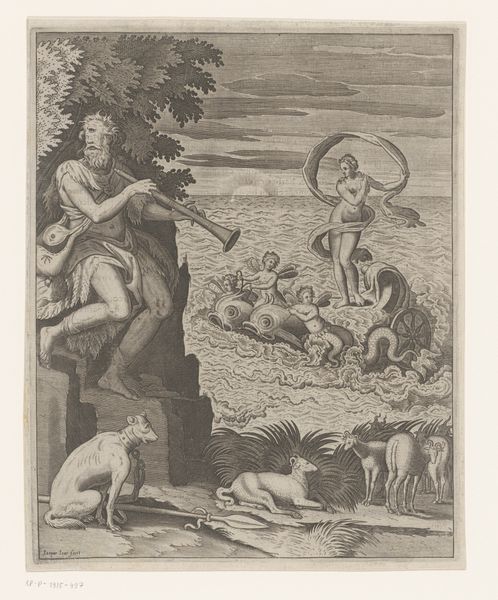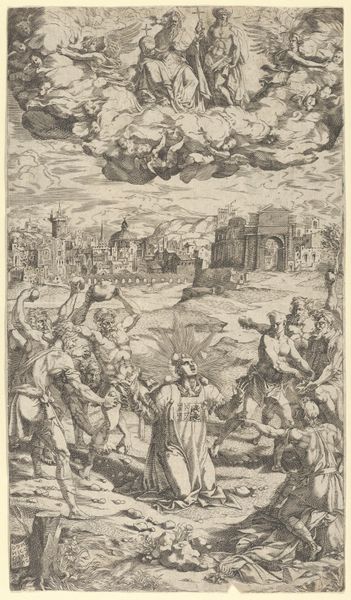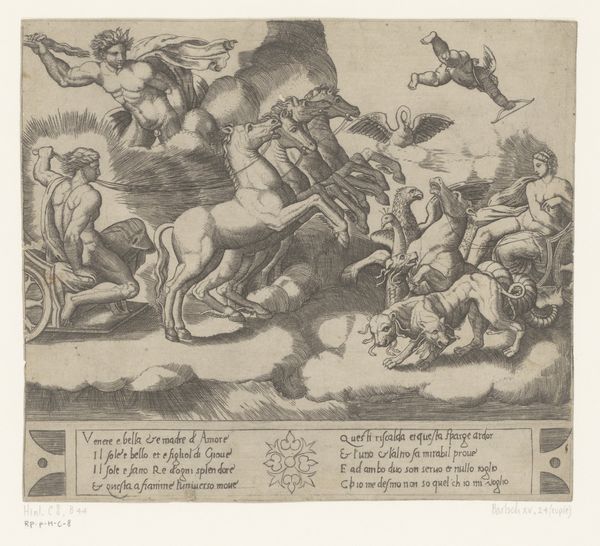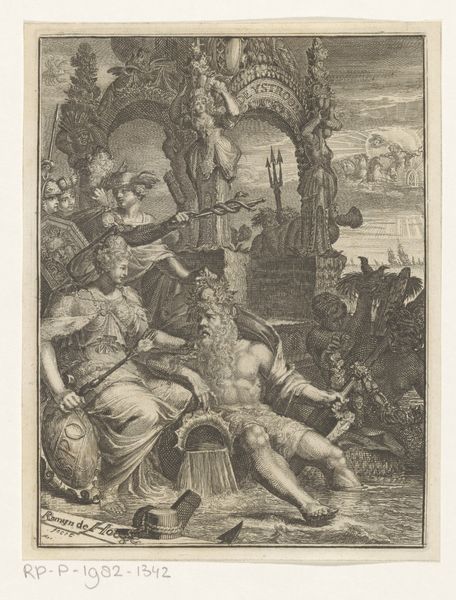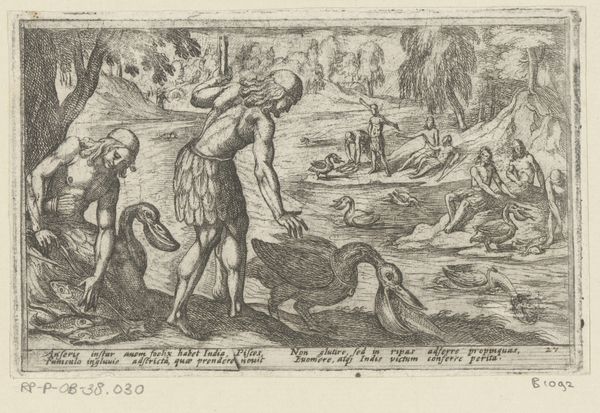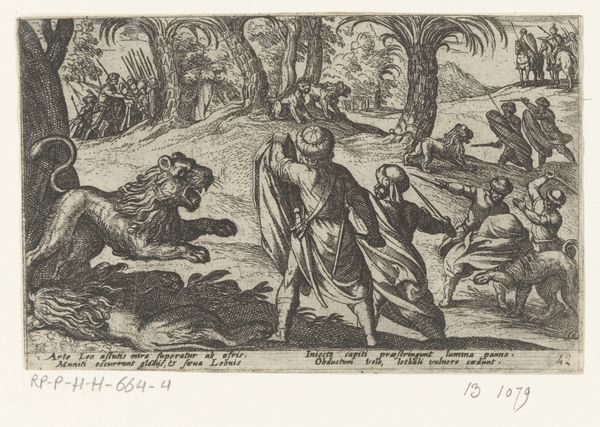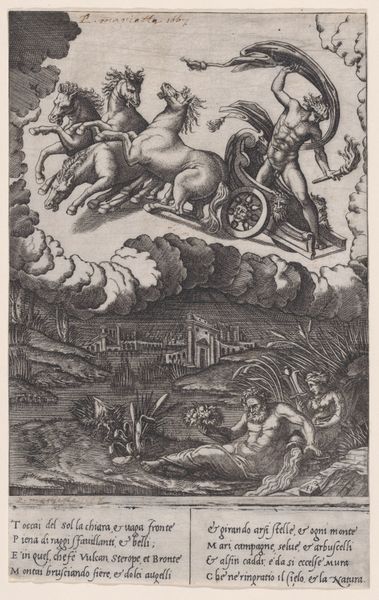
print, engraving
#
narrative-art
#
baroque
# print
#
landscape
#
figuration
#
history-painting
#
engraving
Dimensions: height 275 mm, width 196 mm
Copyright: Rijks Museum: Open Domain
This print of Saint George and the Dragon was made by Heinrich Ulrich, around the turn of the 17th century. It is an engraving: a process that involves incising lines into a metal plate, inking the surface, and then wiping it clean, so that the ink remains only in the carved recesses. The plate is then pressed onto paper, leaving a crisp impression. Look closely, and you’ll see that the material qualities of the engraving process profoundly influence the image. The linear quality gives it incredible detail, from the dragon's scales to the folds of the princess's dress. The graphic contrast adds drama to the scene. But the material also speaks to social context. Engravings like this one were relatively cheap to produce, and could be widely distributed. They helped to spread the story of Saint George throughout Europe, reinforcing his status as a symbol of Christian strength. This print testifies to the power of a relatively simple process to mobilize a potent cultural narrative.
Comments
No comments
Be the first to comment and join the conversation on the ultimate creative platform.
